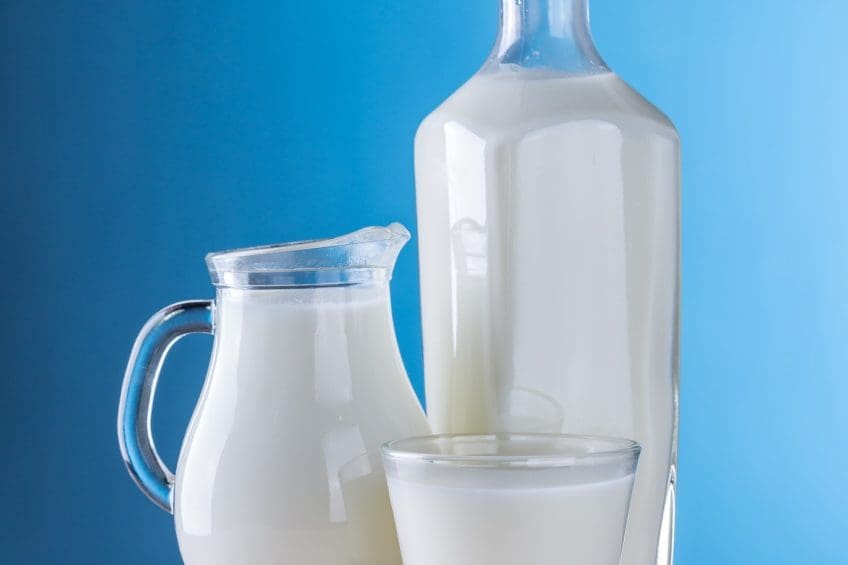Raina’s Dairy-free Diet Trial
This year the theme at Revive is “Keeping it Real.” The goal with this theme is to highlight some of the areas where our dietitians struggle and the strategies they use in everyday life.
There are a variety of different diets out there. From the vegetarian diet to the FODMAP diet, some are based on personal choice while others are intended to address health concerns. Over the next year, Raina, one of Revive’s Registered Dietitians, will follow a variety of diets for at least one week. Living in the shoes of many of her clients, Raina will share the benefits and challenges of each diet and her experience adjusting to new ways of eating.
The Dairy Free Diet
Part II of our ‘Keeping It Real’ series is going dairy-free. This dietary restriction presented both pros and cons for me.
Con #1: I love dairy. All things dairy.
Pro #1: There are a ton of dairy-free options available.
Con #2: Dairy-free options are expensive!
Pro #2: Sampling new foods!
If you read my previous blog, I trialled a lacto-ovo vegetarian diet, meaning I could only consume animal-based proteins from dairy products and eggs. This time was completely the opposite – no milk, yogurt, cheeses or whey-based proteins. Gulp.
The greatest challenge I found with this diet is consuming lean sources of protein, especially at snacks. You can control the fat content in dairy products, but it’s very challenging to control the fat content of meats and other proteins.
Consuming enough calcium in my diet was another challenge. I had to turn to dairy-free sources of calcium which are not nearly as high as milk and yogurts.
Because I was concerned about calcium, I found myself drawn to almonds and almond butter often, especially at snacks. They are quick, portable, and nutrient rich. Be mindful about their fat though! My calorie levels jumped up significantly if I consumed almonds more than once in the day.
One of the most important things to remember is that milk alternatives are not equivalent to milk products. Rice, almond, cashew, hemp, and coconut milk do not contain the same protein content as regular cow’s milk. Some brands are fortified while others are not, so be sure to check the label!
I also had the opportunity to try a few dairy-free products. Here’s my review:
- Almond milk – Good option for having a drink of milk, but it does not replace the cream I usually have in my morning coffee. However, it is fortified with vitamin D and calcium, helping me reach my daily goals.
- Coconut milk – not for drinking on its own (in my opinion). It goes great in a smoothie, especially paired with mango or raspberries. The brand I purchased (So Good) was not fortified with calcium or vitamin D.
- Almond and cashew yogurt – do not expect the creaminess of yogurt. The taste was a mix of tangy and nutty. Reviews from the sampling around our office were mixed. Try it as part of yogurt parfait or on top of a dessert, but the taste is quite strong on its own. Also, it is not a significant source of protein like Greek yogurt, but the brand I purchased was fortified with calcium and vitamin D.
- Hemp heart protein powder – I accidentally purchased a ‘berry and greens’ mixture when I thought I was purchasing plain hemp heart protein powder, so check your labels carefully! There is definitely an overriding “green” taste, but it paired well with a berry and banana smoothie.
- Vega Sport protein powder – mix well. Mix very well. This protein powder definitely has a more “chalky” consistency. It mixes well in a smoothie (use a powerful blender), but I would recommend not mixing straight into water (my personal preference). Vega Sport is third-party tested, so it’s a great and safe option for competitions and recreational activities.
My top tips for following a dairy-free diet:
- Focus on consuming lean sources of protein such as roasted beans or legumes, edamame, lean jerkies, hard-boiled eggs or egg whites, protein powder, and canned tuna or salmon.
- Plan ahead for your protein, especially at snacks! If not, the protein gets missed or you can default to higher fat protein options.
- Read your labels! Not all dairy-free products are fortified with calcium and vitamin D and so they are not always equivalent.
- Take a calcium and vitamin D supplement or multivitamin. While it’s possible to meet calcium needs through diet without dairy products, it can be challenging. Consuming 200-300 mg of calcium daily plus 1000 IU of vitamin D from supplements is very helpful to meet your needs!

